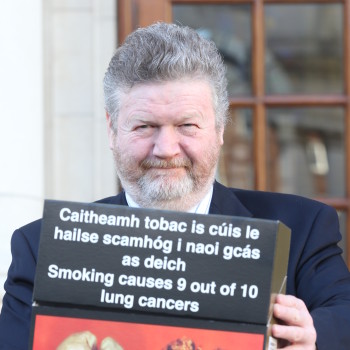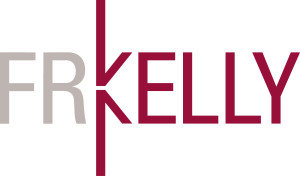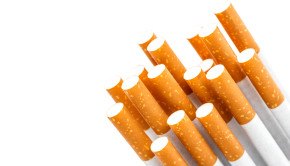The plain facts

Sumi Nadarajah of law firm, FRKelly, examines the challenges posed to tobacco manufacturers by the introduction of plain packaging and the knock-on implications for retailers
3 September 2015
 Plain packaging is a regulatory proposal requiring generic packaging for all tobacco products – the packaging must consist of 65% health warnings on both front and back and be devoid of branding save for the individual brand name appearing in a specified standard typeface, colour and size. In March 2015, the Irish president signed the Public Health (Standardised Packaging of Tobacco) Act 2015 into law in this country. Unsurprisingly, strenuos objections were raised by big tobacco companies namely Philip Morris (Marlboro), British American Tobacco (Dunhill, Lucky Strike, Kool) and Japan Tobacco International (Camel, Winston, Benson & Hedges).
Plain packaging is a regulatory proposal requiring generic packaging for all tobacco products – the packaging must consist of 65% health warnings on both front and back and be devoid of branding save for the individual brand name appearing in a specified standard typeface, colour and size. In March 2015, the Irish president signed the Public Health (Standardised Packaging of Tobacco) Act 2015 into law in this country. Unsurprisingly, strenuos objections were raised by big tobacco companies namely Philip Morris (Marlboro), British American Tobacco (Dunhill, Lucky Strike, Kool) and Japan Tobacco International (Camel, Winston, Benson & Hedges).
Despite aggressive lobbying against this initiative by tobacco companies, legislation on plain packaging has been passed in Australia and Ireland, with the UK not far behind. France and New Zealand are set to follow suit whilst Norway and Singapore have released public consultations proposing plain packaging. India, Canada, Panama, South Africa, Burkina Faso and Turkey are all also considering the merits of this movement, to name but a few countries. Much of the plain packaging legislation is now the subject of ongoing litigation brought by the various tobacco companies.
Changing the dynamics of competition
Tobacco companies now face the biggest challenge ever posed to their industry as a result of these regulations. Firstly, it changes the dynamics of competition in the tobacco market. For instance, the free movement of goods is enshrined in EU law. However, due to the different countries within the EU (namely Ireland, UK and France) adopting plain packaging legislation, tobacco manufacturers cannot sell products that they legally manufacture across the board in all member states.
Additionally, without trademarks and packaging, it will be extremely difficult for manufacturers to enter into new markets. The competition will now have to focus on price, which makes it extremely difficult for manufacturers with small market shares in any particular member state to strengthen their market position. In short, this will create a significant barrier to market entry and raises barriers to trade.
Intellectual property
These proposed regulations also deprive tobacco manufacturers of their intellectual property and in particular, severely diminishes the value of their trade marks. The regulations effectively deprive the owners and licensees of the relevant trademark rights of their ability to use their intellectual property, including in communicating quality and origin, and in distinguishing their product from that of a competitor. Recent research reveals that following the introduction of plain packaging legislation in Australia, long-term smokers are increasingly unable to differentiate between the taste of cigarettes, effectively negating the brand loyalty that has been built up over time. This opens a whole new challenge for tobacco companies – where the knock-on effect of plain packaging regimes could also dilute brand loyalty.
The tobacco industry contend that there is no credible evidence that plain packaging will actually achieve public health objectives. In Australia for instance, increased prices of tobacco is mainly held responsible for the contraction in the tobacco industry. In any case, a contraction in the tobacco industry doesn’t necessarily mean a reduction in tobacco consumption – because more smokers will buy products from the black market. The reduction in smoking rates in countries such as Britain, Australia and Brazil was more than offset by growing consumption in China alone.
Plain packaging legislation also prevents tobacco companies from communicating with consumers about their brands. Brands are central to the business of a tobacco manufacturer. Packaging allows them to compete with other products in the marketplace available to consumers. One feared consequence of plain packaging is that it will lead to the growth of an illegal and unregulated trade in Ireland, contrary to the intention of legislators.
Potential domino effect
Another obvious concern with plain packaging for tobacco products is that it will create a domino effect, with other industries then targeted for similar treatment. Clearly the alcohol and food sectors are prime targets for a similar exercise. Reports have emerged that Indonesia, a significant exporter of tobacco, is stepping up plans to introduce plain packaging for alcoholic products (such as wine) in retaliation against Australia’s plain packaging tobacco regime. Whilst there has not been a tidal wave of plain packaging initiatives being extended beyond tobacco products, global IP associations (including the International Trade Mark Association, MARQUES, ECTA and ICC BASCAP) in a joint statement have voiced their concerns that plain packaging will not be restricted to tobacco products, noting, “Already there have been suggestions that similar measures might be applied to alcoholic drinks and to other products that are considered unhealthy. To adopt any plain packaging requirements would be setting a precedent for other products.”
The challenge arising from an economic perspective has been described by Nigel Farage of the UK Independence Party as “an appalling intrusion into consumer choice and the operation of the free market. Jobs and tax revenue would suffer. I call it a deliberate and nonsensical imposition on a market worth around £12bn to the treasury, and which keeps around 66,000 people in jobs.”
Ultimately, the biggest challenge faced by the tobacco industry is how to convince governments that plain packaging, with its very obvious benefits, brings with it a different set of problems. A fine balance will have to be drawn between the health of citizens versus the interests of commerce, with both sides being careful not to sacrifice one right at the expense of the other.



 Print
Print





Fans 0
Followers